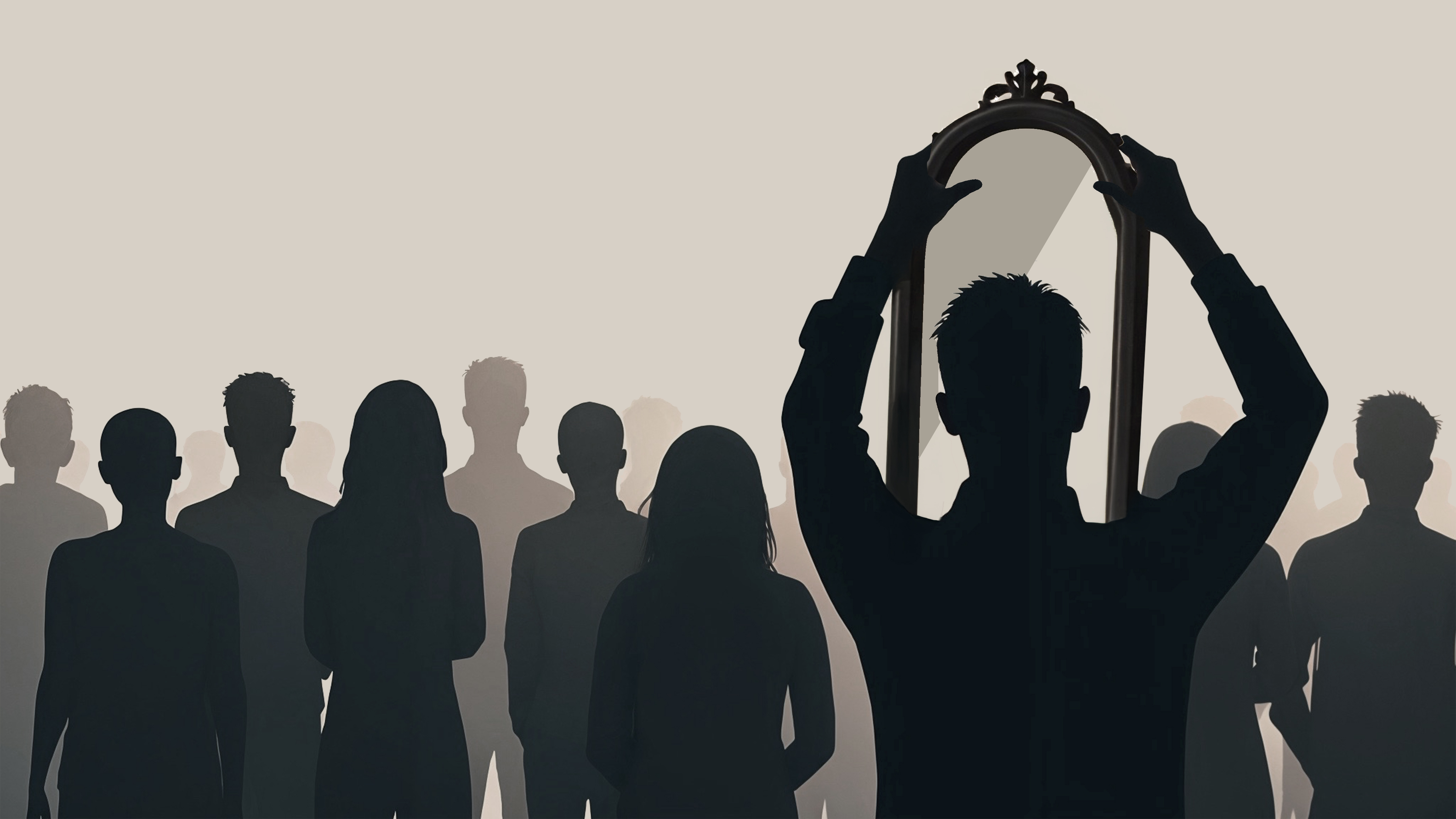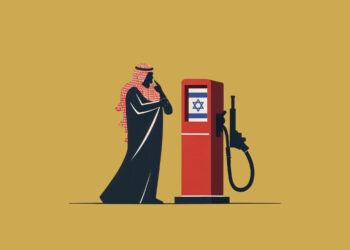Samah Karaki is a Lebanese-French neuroscientist and writer. She holds a PhD in Neuroscience, along with master’s degrees in Neurobiology and Biodiversity & Ecology. Her work bridges biological and social sciences, and she has authored several books, including Analyse interdisciplinaire de la disparition du jeu libre de l’enfant, Le talent est une fiction, and L’empathie est politique.
Diana Abbani: I want to start with a fundamental idea that frames our conversation. We are living through a cruel historical moment, witnessing a genocide in Gaza that has lasted over a year—watched by the world in silence—while our shared sense of humanity is crushed. As Arabs, it feels as if humanity is being redefined without us, as if we stand outside it, unseen. This is why your book, L’Empathie est Politique, feels so relevant—it speaks directly to the realities we are living. With this in mind, I want to begin with a simple but essential question: How should we understand “empathy”?
Samah Karaki: The term empathy is relatively new in both English and French and was not originally linked to emotions as we understand them today. It comes from the German concept Einfühlung in the field of aesthetics, meaning “feeling into”—the idea of experiencing what another person is going through or immersing oneself in a work of art. Initially, empathy described the sensation of being part of a creative experience, when engaging with a work of art or listening to music. It also extended to empathy toward non-human entities, such as animals or plants, as a way of attempting to understand their experiences.
 With the rise of psychology in the 1920s, empathy came to mean the ability to feel and understand the emotions of others. Later, neuroscience categorized it into two main types:
With the rise of psychology in the 1920s, empathy came to mean the ability to feel and understand the emotions of others. Later, neuroscience categorized it into two main types:
Emotional Empathy – An automatic response that allows us to sense the emotions of others through facial expressions, tone of voice, or body language. It works like emotional contagion—similar to yawning when someone else yawns—and appears early in life, even in infants. However, it is not necessarily linked to altruism or a desire to help; rather, it focuses on mirroring and understanding the emotions of others
Cognitive Empathy – A more deliberate process that requires imagining another person’s emotions and experiences through abstract thinking. It demands effort and mental energy, as it involves consciously putting oneself in someone else’s position, to grasp their feelings and what they are going through.
These two forms together shape our understanding of empathy. However, a common misconception creates a false divide between emotions and cognition, assuming that emotions are more authentic or just, while reason is seen as a tool for controlling them. Western philosophy has often framed emotions as irrational or dangerous if unchecked, but this binary is not supported by scientific evidence.
In my book, I challenge this divide. Emotions and cognition are not separate—our emotions reflect our past experiences and cultural background. Similarly, cognition is neither fixed nor universal—it is shaped by cultural and social contexts and the accumulated experiences of the individual.
To fully grasp empathy, we must recognize how deeply intertwined these elements are. Our perception of emotions is never purely objective; it is shaped by history, memory, and culture. My book reexamines these traditional dichotomies, showing that empathy is neither purely emotional nor purely rational—it is a complex, dynamic process shaped by the social and cultural world we live in.
DA: Why did you feel it was important to write this book now?
SK: Two main reasons pushed me to write this book.
The first was my close attention to what was happening in Palestine, particularly in October and November 2023, and how the media and public discourse in France, where I live, framed these events. I noticed how both sides were accused of lacking empathy, but more importantly, how emotions were systematically used as a tool to justify violence. For example, political analysts on major news programs defended Israel’s actions by framing them as responses to collective trauma or mourning, making any criticism nearly impossible. Emotions were placed at the center of political debates—not to promote understanding or reduce suffering, but to rationalize brutality.
The second reason is the rise of self-development culture, which has glorified the individual and their emotions to an extreme degree over the past few decades. This mindset suggests that all feelings are valid simply because they are personal, without the need for reflection or accountability. As a result, emotions have been used to justify inhumane positions, prioritizing the self over others—even in political and economic contexts. I see a connection between this culture and fascism, where the individual is placed at the center of everything, while the impact of their emotions on others is ignored.

With this book, I wanted to highlight that our emotions are not neutral or isolated; they are shaped by our interests, history, relationships, and even our geographical distance from suffering. Emotions are never innocent—they are deeply tied to social and political structures. I also explore the role of media, cinema, and literature in dehumanizing certain groups, reinforcing empathy gaps, and sustaining systems of domination.
DA: The media plays a key role in shaping dominant narratives, particularly in the systematic dehumanization of certain groups. This is not new; we have long seen how Western media portrays Arabs, Muslims, and other marginalized communities, such as Mexicans in the U.S. or Africans in France, through stereotypes and degrading imagery. The war in Syria, for example, was extensively documented, yet this visibility led to no real change. In some cases, images of suffering are even weaponized to justify further violence, as we see in Gaza, where dominant powers manipulate narratives to serve their interests. Given this reality, how do you see the role of the media today in sustaining these narratives? How does it continue to reproduce the same stereotypes as a tool for reinforcing power structures?
SK: We need to understand that the hierarchy determining the value of human life and bodies is not new; it is the product of long historical processes and ongoing systems of domination. The media often reinforces these hierarchies by justifying the neglect of certain tragedies, using arguments like “There have always been wars in these regions” to make suffering in these places seem inevitable or unremarkable.
From a neuroscience perspective, our brains react more strongly to unexpected events than to those perceived as routine. This partly explains why ongoing wars in places like Gaza, Syria, or Lebanon fail to elicit sustained empathy. But reducing this to desensitization or geographical distance oversimplifies the issue. The deeper roots lie in historical policies that have reinforced notions of superiority, shaping how different lives are valued.
Dehumanization is deeply tied to colonialism. In Algeria, during the French occupation, the control of bodies was central to domination, just as it was in slavery, where bodies were reduced to instruments of labor and subjugation. Similarly, the establishment of Israel was based on the exclusion of Palestinians, who were treated as disposable. Even within Israel, hierarchies exist between Ashkenazi and Mizrahi Jews. Over time, biological racism has given way to cultural racism, reinforcing the West as the model of progress and morality while justifying colonialism and violence under the pretense of self-protection from barbarians, cleansing the world, or civilizing the Other.
These narratives are not exclusive to the West; they are deeply embedded in our own societies, where Western models are often upheld as the ultimate model of advancement. As Edward Said showed, the exploitation of Arab and Muslim bodies is part of a long colonial history. The media continues to fuel this by framing violence as necessary for self-defense, a pattern Judith Butler has highlighted in the case of Afghanistan.
Even when it comes to empathy toward other living beings, our perceptions are shaped by whether we see them as endearing or threatening. People easily empathize with kittens but ignore snakes. In my study on environmental disasters, when participants had to choose between saving large animals, small animals, or migrants, many chose to abandon migrants before animals. This reflects how far-right rhetoric has successfully dehumanized migrants, portraying them as threats to security, jobs, or cultural identity. Repeated exposure to these messages gradually shapes collective attitudes, often without people realizing it.
A clear example of media bias can be seen in the portrayal of Gaza and Tel Aviv in French news coverage. Images of Tel Aviv depict peaceful, beautiful people living in peace and tranquility. Images of Gaza, in contrast, focus on destruction and aggression, often featuring men shouting Allahu Akbar. This deliberate framing reinforces the stereotype of the Other as violent and barbaric, further justifying oppression.
Neuroscience shows that when the media depicts the Other as a threat, it erodes empathy, making preemptive violence feel like self-defense. These political and media dynamics force us to rethink how we portray the Other and question the mechanisms that shape—and distort—our capacity for empathy.

DA: I would like to return to the topic of self-development and connect it to a concept you explore in your book—emotional tourism. You argue that this phenomenon turns empathy into a tool for personal growth rather than a means of achieving justice and equality. Could you elaborate on the concept of emotional tourism? And does it reflect a broader shift, where politics is no longer about justice but rather about individual self-enhancement?
SK: Empathy is often seen as an automatic or innate response, but in reality, it requires significant energy and effort. Biologically, our bodies must replenish the energy consumed by emotional experiences, whether joyful or painful. When people lack genuine emotional experiences, they often seek out artificial ones to fill the void—this is what I call emotional tourism.
Emotional tourism is the search for experiences that give life a sense of meaning. Some people deliberately seek out sadness by watching tragic films or engaging in activities designed to stir their emotions. A telling example is the website Stuff White People Like, which humorously documented middle-class white cultural habits—things like attending music festivals or camping in the wilderness. For a migrant or a homeless person, choosing to sleep outdoors is not an aesthetic experience but a struggle for survival. Yet, for many privileged individuals, these experiences become a way to infuse their lives with meaning.
This phenomenon is rooted in a deeper idea, inherited from the Judeo-Christian tradition: the notion that suffering adds value. Those who endure pain are often seen as morally superior, shaping identities around victimhood and reinforcing who “deserves” empathy. This idea extends into art, literature, and even media, where suffering becomes a marker of personal growth or authenticity.
But emotional tourism turns the suffering of others into something that can be consumed—without considering its real impact. The media plays a key role in this process. It is no longer enough to report numbers or statistics; to capture attention, stories must be deeply personal and tragic, with accounts of torture, rape, or extreme suffering. These stories evoke an emotional reaction but rarely lead to real change. Instead, they reinforce existing power structures.
This is how the imperialist and fascist system commodifies empathy. It funds exhibitions, documentaries, and books on colonialism or humanitarian crises, yet these works often serve to sustain the very system they critique. As Jacques Rancière argues, everything produced within the system is ultimately absorbed and turned into a commodity. The emotional stories circulating on social media evoke emotions but offer no historical depth or real solutions. They create the illusion of awareness or change, but in reality, nothing fundamentally shifts.
This is why the metaphor of tourism is so fitting. Who is a tourist? Someone with the time, money, and privilege to move freely. Who is the empathizer? Someone who has the luxury of engaging in temporary emotional experiences of suffering—without actually giving up anything in return.
This inflation of personal experience turns pain into a form of self-enrichment. Suffering—especially the suffering of others—becomes a decorative element in one’s emotional landscape, curated like an aesthetic experience. But in the end, this form of empathy does not challenge the structures that produce suffering. It only makes them more palatable.
DA: Let’s pause on the concept of victimhood and how it connects to your argument that emotions are shaped by historical experiences and social bonds—by who we love and who we hate. In Lebanon, sectarian narratives are built around exaggerated victimhood, with each sect constructing its identity through past experiences of persecution and marginalization. The Shia community, for example, often invokes its collective memory of exclusion and discrimination. At the same time, we see a growing crisis of empathy toward what is referred to as Hezbollah’s social base—and toward Shia communities more broadly. The victims of the pagers’, for instance, receive little public attention, as their suffering is immediately linked to Hezbollah, making them isolated from broader societal empathy. How do these dynamics fit into your framework of emotions and victimhood? And how do they shape inter-sectarian relations and conflicts in Lebanon?
SK: One of the key concepts that helps us understand racist and exclusionary systems is essentialism—the idea that groups possess fixed, unchangeable traits. This way of thinking reduces individuals to assumed cultural, social, or psychological characteristics, reinforcing stereotypes and justifying discrimination.
In Lebanon, anti-Shia sentiment is not new; it has deep historical roots that go beyond Hezbollah’s rise. For much of Lebanon’s modern history, Shia communities have faced marginalization and ridicule—not because of their power, but because of their historical weakness and exclusion. This marginalization was not just economic; it also impacted dignity and social recognition, leaving a lasting sense of inferiority. Hezbollah’s emergence centered around reclaiming this lost dignity, but it also contributed to a sense of collective narcissism within parts of the Shia community—a reaction to decades of systemic exclusion.
Lebanon’s sectarian structure reinforces hierarchies, where each group perceives itself as more civilized or superior to others. This obstructs equality, which is essential for empathy. The collective narcissism associated with newfound power among some Shia communities has further complicated inter-sectarian relations, as media narratives increasingly portray them as a threat. This framing facilitates dehumanization and makes the absence of empathy toward them more socially acceptable.
The lack of empathy is not new—it is the result of historical accumulations and misleading narratives that reduce communities to rigid, simplistic identities. From a neuroscience perspective, dignity is a fundamental need, much like basic biological necessities. When stripped away, it causes psychological pain comparable to physical suffering. A society cannot function equitably unless all its members feel recognized and valued—something Lebanese leadership and movements has consistently failed to provide.
Victimhood is not a fixed identity; it is a condition that shifts over time. Groups and individuals can be both victims and oppressors simultaneously. In Lebanon, as in Israel, historical victimhood no longer justifies collective actions. However, the human brain tends to preserve narratives that align with existing self-perceptions, avoiding contradictions that require cognitive effort.
When faced with uncomfortable truths, individuals experience cognitive dissonance—a psychological state where they reject information that threatens their self-image. This explains why people can show deep empathy toward one group while completely lacking it toward another, depending on their political and social positioning. Even those who commit acts of violence can behave differently in other contexts, reflecting the complexity of human behavior.
Hannah Arendt, in her analysis of German society, noted that the stronger a group’s internal cohesion, the more likely it is to develop hostility toward outsiders. Insular communities tend to reinforce their own narratives while deepening their animosity toward the Other.
Two key factors contribute to this: Historical Accumulation and the Illusion of a Just World. Emotions and biases are shaped over time through collective memory and inherited narratives. The brain seeks to maintain the belief that the world is fundamentally fair. This often leads individuals to rationalize injustices they experience or witness, making them more likely to perpetuate the same patterns of exclusion and discrimination.
The greatest challenge is confronting historical realities with honesty, moving beyond simplistic narratives that always frame one’s own group as either purely victimized or victorious.
Breaking free from these entrenched perspectives requires new narratives that foster just relationships between communities. It also demands intellectual flexibility—the ability to acknowledge past mistakes, recognize injustices, and accept historical complexity. Only by doing so can societies cultivate genuine empathy, dismantle exclusionary hierarchies, and build a path toward true coexistence.
DA: In your work, you highlight that empathy can be restored not by seeking immediate solutions but by asking better questions, valuing differences rather than forcing similarities, and embracing others’ stories while recognizing that we can never fully understand their experiences. These ideas are especially relevant when discussing the importance of international law. However, given its failure in the face of the genocide in Gaza, how do you see its role today?
SK: Before discussing international law, we need to understand human nature. Like other social creatures—such as mice and primates—humans establish rules to ensure their survival. These rules shape relationships within a group and can emerge through mutual agreement or be imposed by force. Even children, in their games, create rules that teach them negotiation, compromise, and cooperation. In this sense, international law is an extension of these fundamental principles.
However, modern international law was shaped by catastrophic crimes and destruction, primarily in Europe, before being codified into global standards. Though it emerged from a history of Western dominance, it remains a crucial framework for regulating global relations and protecting human lives. It defines crimes such as genocide, apartheid, and environmental destruction, aiming to prevent large-scale atrocities.
For instance, international law mandates the protection of civilian structures, even when combatants or suspected terrorists may be present, to minimize human casualties. Based on this principle, the destruction of homes in Gaza under the pretext of targeting terrorists is a clear violation of international law. In fact, such actions can themselves be classified as terrorism, like the pagers’ attack.
The real issue is not the existence of international law but its selective and unjust application. There have been cases where its enforcement has successfully limited violations—such as humanitarian law protocols in armed conflicts—but it remains an instrument that often serves the interests of powerful states. Reform is urgently needed to make the system more inclusive and just.
Abandoning international law in favor of emotions poses a serious risk. Despite its flaws, it remains essential for regulating global relations and preventing chaos. Even in its imperfect form, its enforcement can still curb crimes and provide a foundation for a more just world.
Rather than dismissing international law as ineffective, we should demand its consistent and unbiased application, recognizing its potential as a safeguard against atrocities—if only the world were willing to uphold it.








